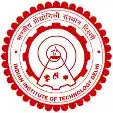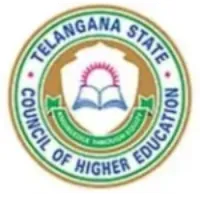Latest Applications Open 2024:
The IIT JAM Geology Syllabus for 2025 has been officially released by the IIT JAM 2025 authority online. Students can download the IIT JAM 2025 Syllabus in PDF format for their preparation.
IIT JAM, jointly conducted by the Indian Institutes of Technology (IITs) and the Indian Institute of Science (IISc), is an entrance test for admission to various Masters of Science and Technology programs. IIT Delhi administers the IIT JAM 2025 Exam. To enhance their preparation, candidates are encouraged to download other relevant syllabi in PDF format as well.
The IIT JAM is known as the India Institute of Technology, and the Indian Institute of Science may offer the Joint Admission Test for Masters of Science and Technology. For Better Preparation, Candidates can also Download other Syllabus in PDF format.
Click to Download the GG Syllabus PDF.
Geology
The Planet Earth: Origin of the Solar System and the Earth; Geosphere and the composition of the Earth; Shape and size of the Earth; Earth-Moon system; Dating rocks and age of the Earth; Volcanism and volcanic landforms; Interior of the Earth; Earthquakes; Earth’s magnetism and gravity, Isostasy; Basic elements of Plate Tectonics; Orogenic cycles.
Latest Applications For Various UG & PG Courses Open 2024
-
- Parul University | Admissions Open for All Courses 2024. Apply Now
- Chandigarh University | Admissions Open for All Courses 2024. Apply Now
- IIAD, Delhi | Admissions Open for All Courses 2024. Apply Now
- GIBS, Bangalore | PGDM Applications Open. Package upto 15.5 LPA. Apply Now
- GNIOT, Greater Noida | Admissions Open for All Courses 2023. Apply Now
- The Design Village | Admissions Open for All Courses 2024. Apply Now
- IMS Ghaziabad UC Campus | Admissions Open for All Courses 2024. Apply Now
- KIIT School of Management | Admissions Open for All Courses 2024. Apply Now
- KSRM | Admissions Open for All Courses 2024. Apply Now
- Jaipuria Institute of Management | Admissions Open for All Courses 2024. Apply Now
- NIIT | Admissions Open for All Courses 2024. Apply Now
- MITWPU | Admissions Open for All Courses 2024. Apply Now
- KL University | Admissions Open for All Courses 2024. Apply Now
- Alliance MBA | Admissions Open for All Courses 2024. Apply Now
- Alliance UG | Admissions Open for All Courses 2024. Apply Now
- GD Goenka | Admissions Open for All Courses 2024. Apply Now
Geomorphology: Weathering and erosion; Soil formation; Transportation and deposition by wind, ice, river, sea and resulting landforms.
Structural Geology: Orientation of planes and lines in space – concept of dip, strike, rake and plunge. Contour lines; Rule of ‘V’s and outcrop patterns; Interpretation of geological maps and cross-section construction; Classification and origin of folds, faults, joints, unconformities, foliations and lineations; Stereographic and equal-area projections of planes and lines; Numerical problems related to outcrop and bore-hole data.
Paleontology: Major steps in the evolution of life forms; Fossils, their mode of preservation and utility in age determination and paleoenvironmental interpretations; Morphology, major evolutionary trends and ages of important groups of animals – Brachiopoda, Mollusca, Trilobita, Graptolitoidea, Anthozoa, Echinodermata; Gondwana plant fossils; Elementary idea of vertebrate fossils in India.
Stratigraphy: Principles of stratigraphy; Litho-, Chrono- and biostratigraphic classification; Stratigraphic correlation techniques; Archaean cratons of Peninsular India (Dharwar, Singhbhum and Aravalli); Proterozoic mobile belts; Stratigraphy of Cuddapah and Vindhyan basins; Stratigraphy of Paleozoic – Mesozoic of Spiti and Kashmir, Gondwana Supergroup, Jurassic of Kutch, Cretaceous of Trichinopoly, Tertiary and Quaternary sequences of Assam, Bengal and Siwaliks.
Mineralogy: Symmetry and forms in common crystal classes; Physical properties of minerals; Isomorphism, polymorphism, solid solution and exsolution; Classification of minerals; Structure of silicates; Mineralogy of common rock-forming minerals; Elements of Optical Mineralogy, Optical properties of common rock-forming minerals.
Petrology: Definition and classification of rocks; Igneous rocks – forms of igneous bodies; Processes of evolution and diversification of magma; Classification, association, and genesis of common igneous rocks. Sedimentary rocks – classification, texture, and structure; Petrology of sandstone and limestone; Elements of sedimentary environments and facies. Metamorphic rocks – classification and texture; Types of metamorphism; Controls on metamorphism – pressure, temperature and fluids; Concept of projections – ACF, AKF and AFM diagrams; Phase Rule and its applications; Concepts of zones and facies, Characteristic mineral assemblages of pelites in the Barrovian zones and mafic rocks in common facies.
Economic Geology: Physical properties of common economic minerals; General processes of formation of mineral deposits; Mode of occurrence and distribution of metallic and non-metallic mineral deposits in India; Fundamentals of reserve calculation; Elements of coal and hydrocarbon geology, Coal and hydrocarbon occurrences in India.
Latest Applications For Various UG & PG Courses Open 2024
-
- Parul University | Admissions Open for All Courses 2024. Apply Now
- Chandigarh University | Admissions Open for All Courses 2024. Apply Now
- IIAD, Delhi | Admissions Open for All Courses 2024. Apply Now
- GIBS, Bangalore | PGDM Applications Open. Package upto 15.5 LPA. Apply Now
- GNIOT, Greater Noida | Admissions Open for All Courses 2023. Apply Now
- The Design Village | Admissions Open for All Courses 2024. Apply Now
- IMS Ghaziabad UC Campus | Admissions Open for All Courses 2024. Apply Now
- KIIT School of Management | Admissions Open for All Courses 2024. Apply Now
- KSRM | Admissions Open for All Courses 2024. Apply Now
- Jaipuria Institute of Management | Admissions Open for All Courses 2024. Apply Now
- NIIT | Admissions Open for All Courses 2024. Apply Now
- MITWPU | Admissions Open for All Courses 2024. Apply Now
- KL University | Admissions Open for All Courses 2024. Apply Now
- Alliance MBA | Admissions Open for All Courses 2024. Apply Now
- Alliance UG | Admissions Open for All Courses 2024. Apply Now
- GD Goenka | Admissions Open for All Courses 2024. Apply Now
Applied Geology: Groundwater and hydrological cycle, Types of aquifers, porosity and permeability; Principles of engineering geology; Geological considerations in construction of dams and tunnels.
IIT JAM Geology Syllabus 2025 FAQs
What is the origin of the Solar System and Earth?
The Solar System formed about 4.6 billion years ago from a giant molecular cloud. Over time, gravitational forces caused particles to accrete, forming planets like Earth.
How is the Earth’s geosphere defined?
The geosphere refers to the solid Earth, including the crust, mantle, and core. It encompasses the rocks, minerals, and structures that compose the planet’s lithosphere.
What is the shape and size of the Earth?
Earth is an oblate spheroid, meaning it is mostly spherical but slightly flattened at the poles and bulging at the equator due to its rotation.
How does the Earth-Moon system influence geological processes?
The Moon’s gravitational pull affects Earth’s tides and stabilizes its axial tilt, influencing climate and ocean currents. It also contributes to Earth’s rotational dynamics.
How do scientists date rocks and determine the age of the Earth?
Radiometric dating techniques measure the decay of radioactive elements in rocks to determine their age. This data, combined with geological evidence, helps estimate Earth’s age at approximately 4.5 billion years.
What are volcanism and volcanic landforms?
Volcanism is the process of magma and gases erupting onto the Earth’s surface. Volcanic landforms include mountains (volcanoes), calderas, lava plateaus, and volcanic islands.
What is the interior structure of the Earth like?
The Earth’s interior is divided into the crust (continental and oceanic), mantle (upper and lower), and core (outer liquid and inner solid). These layers have different compositions and temperatures.
How do earthquakes occur and what are their geological implications?
Earthquakes result from the sudden release of energy in the Earth’s crust, often along faults. They can cause ground shaking, tsunamis, and significant geological changes over time.
What is Earth’s magnetism and how does it influence geological processes?
Earth’s magnetic field is generated by molten iron in its outer core. It shields the planet from solar winds and influences navigation systems, as well as the behaviour of magnetic minerals in rocks.
What are Plate Tectonics and their significance in geology?
Plate Tectonics is the theory explaining the movement of Earth’s lithospheric plates. It accounts for continental drift, mountain formation (orogeny), earthquakes, volcanic activity, and the distribution of geological features on Earth’s surface.
If you have any other queries regarding IIT JAM Geology Syllabus 2025, you can ask us by leaving your comment below.

As a dedicated Biology Science graduate, I’m passionate about sharing the latest updates in national and state entrance exams through my blog. I aim to keep aspiring students informed about exam trends, important dates, and changes in syllabi. With a keen interest in education, I strive to offer valuable insights for students navigating the competitive landscape of entrance examinations and admission tests. Stay updated with me.

